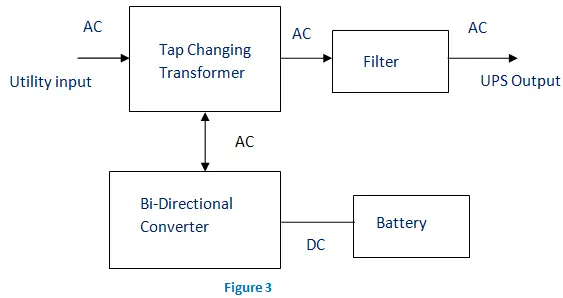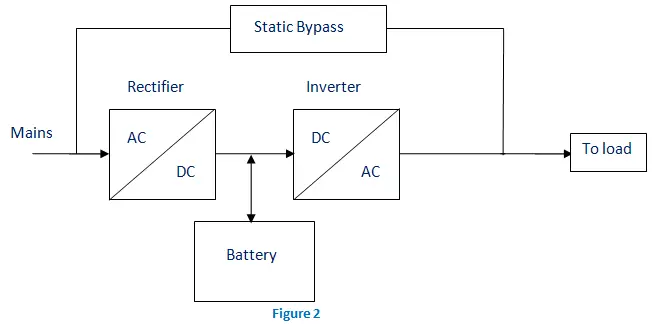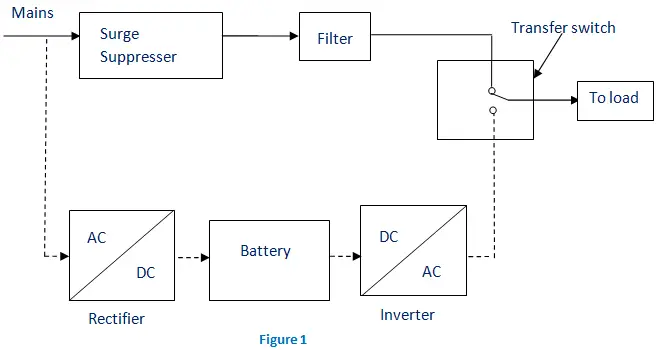
The Need For DC UPS for Telecommunications
What is DC UPS for Telecommunications?
DC UPS for Telecommunications is a type of uninterruptible power supply (UPS) that provides reliable and continuous power to critical telecommunications systems. It operates by converting incoming AC power to DC power, storing the DC power, and then converting the stored DC power back to AC power when AC power is unavailable. This type of UPS is designed for use in applications where there is a need for reliable and continuous power, such as in mission-critical networks, data centers, and other telecommunications systems.
An uninterruptible power supply (UPS) is a device that provides continuous, clean, and regulated power to critical equipment in the event of a power disruption or failure. DC UPS for Telecommunications is a special type of UPS designed specifically for telecommunications systems. It is designed to provide reliable, continuous power to mission-critical networks, data centers, and other telecom systems. It operates by converting incoming AC power to DC power, storing the DC power in batteries, and then converting the stored DC power back to AC power when needed. This ensures that the equipment connected to the UPS can continue to operate without interruption.

Advantages of DC UPS Solutions for Telecommunications
1. Longer Battery Life: DC UPS solutions offer longer battery life than AC UPS solutions, allowing for increased uptime and greater system reliability.
2. Higher Efficiency: DC UPS solutions are more energy efficient than AC UPS solutions, reducing energy bills and improving the overall efficiency of telecommunications systems.
3. Reduced Maintenance: DC UPS solutions require less maintenance than AC UPS solutions, reducing operational costs and improving system reliability.
4. Improved Reliability: DC UPS solutions are more reliable than AC UPS solutions, ensuring greater system uptime and increasing customer satisfaction.
5. Smaller Footprint: DC UPS solutions have a smaller footprint than AC UPS solutions, freeing up valuable space in telecommunications rooms.
How Does a DC UPS System Work for Telecommunications?
A DC UPS system for telecommunications provides an uninterrupted power supply to protect critical systems from power outages or surges. The system is typically composed of a battery, rectifier and inverter. The rectifier converts AC power from the main grid into DC power, which is then stored in the battery for later use. When the main grid power fails, the inverter switches the DC power from the battery to the telecommunications system. This ensures an uninterrupted power supply and protects equipment from power outages or surges. The system also includes a bypass switch that allows for manual maintenance on the system without any interruption to the power supply. The DC UPS system protects the telecommunications equipment from power outages or surges, and ensures an uninterrupted power supply.
Types of DC UPS Systems for Telecommunications
1. Standby DC UPS: This is the most basic type of DC UPS system. It provides power protection for telecommunications systems by providing an emergency power supply when the main power source fails. It typically consists of a rectifier, inverter, power conditioning unit, and battery bank.
2. Line-Interactive DC UPS: This type of DC UPS system is more advanced than the standby DC UPS. It provides more power protection and stability by monitoring the input power and boosting or bucking the voltage as needed. It also features a rectifier, inverter, power conditioning unit, and battery bank.

3. Online DC UPS: This is the most sophisticated type of DC UPS system and provides the highest level of power protection and stability. It works by continuously converting the incoming AC power to DC power and then supplying it to the load. It also includes a rectifier, inverter, power conditioning unit, and battery bank.

4. Offline DC UPS: This type of DC UPS system is designed to provide basic power protection to a telecommunications system. It works by providing a regulated DC voltage to the load and includes a rectifier to convert the incoming AC power to DC power.

Benefits of Implementing a DC UPS for Telecommunications
1. Improved Reliability: DC UPS systems provide a reliable, uninterrupted power supply to keep your telecommunications system running, even during power outages. This ensures that your system is always available and working properly, so customers can be served efficiently.
2. Cost Savings: By providing an uninterrupted power supply, DC UPS systems help reduce operational costs by eliminating the need for costly downtime due to power outages.
3. Enhanced Protection: DC UPS systems help protect your telecommunications system from power surges, spikes, and other electrical problems that can cause significant damage.
4. Increased Performance: By providing clean and stable power, DC UPS systems help ensure optimal performance of your telecommunications system, resulting in improved efficiency and reliability.
5. Reduced Maintenance: With a DC UPS system, you can reduce the amount of time and money spent on maintenance, as it eliminates the need for frequent battery replacements.
Challenges of Implementing a DC UPS for Telecommunications
1. Cost: Implementing a DC UPS for telecommunications can be costly due to the need for additional hardware, such as batteries and inverters, and installation fees.
2. Maintenance: DC UPS for telecommunications require regular maintenance and monitoring to ensure that the system is functioning properly and that no issues arise.
3. Compatibility: DC UPS for telecommunications must be compatible with existing network infrastructure and hardware in order to function properly.
4. Power: DC UPS for telecommunications require a reliable power source in order to ensure seamless operation.
5. Security: DC UPS for telecommunications must be properly secured to protect against security threats and unauthorized access.
Best Practices for Deploying a DC UPS for Telecommunications
1. Choose the Right UPS: Make sure to select a DC UPS that is designed for telecommunications use and meets the specific requirements of your particular setup. Consider features such as the complexity of the architecture, the number of nodes, the power output, and any other specific needs.
2. Determine Cable Requirements: Establish the required cable length and gauge to ensure proper power delivery. The size of the cabling should be properly matched to the load.
3. Install Filtration: Install line and load protection to ensure the DC UPS is not impacted by electrical noise.
4. Conduct a Grounding Test: Test the grounding system to ensure it meets safety standards and the requirements of the DC UPS installation.
5. Perform a Load Test: Test the entire system under load to ensure proper operation and performance.
6. Monitor Battery Health: Monitor the system’s batteries regularly to ensure they are in good condition and will provide the required runtime.
7. Provide Training: Ensure that all personnel involved with the DC UPS installation have the required training to understand and properly maintain the system.
Conclusion
The DC UPS for Telecommunications is a great way to ensure that your telecom equipment is always running and your customers are always connected. It provides reliable power backup and can be easily customized to meet the needs of any telecom installation. The DC UPS provides a cost-effective solution for keeping your telecom installation running without interruption. It is a great investment for any telecom business, as it will help reduce downtime and protect your equipment from power outages and other disruptions.


